Performance Management. Just uttering the phrase can evoke feelings ranging from dread to determination, depending on individual experiences and organizational culture. But no matter your personal sentiment, one thing is undeniable: the landscape of performance management is constantly evolving.
The days of annual reviews and rigid ranking systems are fading, replaced by more dynamic, continuous, and employee-centric approaches.
In this post, we’ll delve into the top seven performance management system trends that are reshaping the way organizations evaluate, develop, and empower their workforce.
The Shift to Continuous Performance Management:
The annual performance review, once the cornerstone of performance management, is rapidly becoming obsolete. Its infrequent nature provides a snapshot in time, failing to capture the nuances of ongoing performance and leaving little room for timely adjustments. Instead, organizations are embracing continuous performance management, a system that prioritizes regular feedback, ongoing coaching, and real-time goal adjustments.
This shift involves frequent check-ins between managers and employees, often facilitated by dedicated performance management software. Implementing continuous performance management requires a cultural shift, emphasizing open communication, trust, and a growth mindset. It also necessitates the use of technology that streamlines the process and facilitates efficient feedback sharing.
Emphasis on Employee Development and Growth:
Traditional performance management often focused heavily on evaluation and ranking, sometimes at the expense of employee development. The modern approach prioritizes development and growth as key components of the entire performance management process. The aim is to identify skill gaps, provide opportunities for learning, and empower employees to reach their full potential.
This trend manifests in several ways:
- Individualized Development Plans: Tailored to each employee’s specific needs and career aspirations, these plans outline concrete steps for skill development and career advancement.
- Focus on Strengths: Rather than solely addressing weaknesses, performance management now emphasizes leveraging employees’ existing strengths to maximize their impact.
- Access to Learning Resources: Organizations are investing in learning management systems (LMS) and providing access to a wide range of training programs, online courses, and mentorship opportunities.
- Opportunities for Cross-Functional Collaboration: Encouraging employees to work on projects outside their immediate roles helps them develop new skills and broaden their perspectives.
By prioritizing employee development, organizations not only improve individual performance but also enhance employee retention and build a more skilled and adaptable workforce.
Integration with Goal Setting Frameworks (OKRs, KPIs):
Effective performance management requires clear goals and metrics that align individual contributions with organizational objectives. Organizations are increasingly integrating their performance management systems with goal-setting frameworks like Objectives and Key Results (OKRs) and Key Performance Indicators (KPIs).
OKRs provide a framework for setting ambitious but achievable goals, while KPIs offer measurable metrics for tracking progress. By linking performance management to these frameworks, organizations can ensure that individual efforts are directly contributing to strategic priorities.
The successful implementation of this integration requires careful planning, clear communication, and the use of performance management software that seamlessly integrates with goal-setting tools.
Leveraging Technology for Enhanced Efficiency and Insights:
Technology plays a critical role in modern performance management. Cloud-based performance management systems offer a range of features that streamline the process, automate tasks, and provide valuable insights into employee performance.
The benefits of using performance management technology are significant: increased efficiency, improved data accuracy, enhanced employee engagement, and better decision-making. However, it’s crucial to select a system that meets the specific needs of the organization and integrates seamlessly with existing infrastructure.
The Rise of 360-Degree Feedback and Peer Recognition:
Traditional performance management often relies solely on feedback from managers. However, this approach can be limited, as managers may not have a complete picture of an employee’s performance across all aspects of their role. 360-degree feedback, which involves gathering feedback from peers, direct reports, and even clients, provides a more comprehensive and nuanced view of an employee’s strengths and weaknesses.
Careful planning and communication are essential for the successful implementation of 360-degree feedback.
Focusing on Employee Well-being and Engagement:
Increasingly, organizations are recognizing the importance of employee well-being and engagement in driving performance. A happy and engaged workforce is more productive, innovative, and loyal. Therefore, performance management is evolving to incorporate elements that promote employee well-being.
By prioritizing employee well-being and engagement, organizations can create a more positive and productive work environment, leading to improved performance and reduced employee turnover.
Embracing Agility and Adaptability:
In today’s rapidly changing business environment, organizations need to be agile and adaptable. Performance management is evolving to reflect this need. Traditional systems, with their rigid structures and infrequent reviews, are ill-suited to the demands of a dynamic workplace.
By embracing agility and adaptability, organizations can ensure that their performance management systems remain relevant and effective in the face of ongoing change.
How FlexiEle Helps to keep up with the Performance Management Trend
FlexiEle HRMS is designed to meet these trends through its dynamic and customizable Performance Management System (PMS) features.
Set Clear Goals:
With FlexiEle, you can set predefined goals for employees right when a new appraisal cycle starts. It’s super easy to keep track of progress, which means no one’s left wondering what they’re working toward—and that’s a big win for focus and motivation.
Encourage Real Feedback
Employees can quickly submit self-evaluations, including feedback, achievements, and even training requests. It’s a smooth way to keep the conversation going all year—not just during appraisals.
Flexible, Hassle-Free Appraisals
Whether you’re running one cycle or juggling multiple, FlexiEle makes it simple. Managers can review, rate, and even send back submissions if something needs another look. It’s flexible, fair, and keeps everything moving.
Stay in the Loop with Smart Notifications
Nobody likes missing deadlines. FlexiEle sends timely reminders and updates to everyone involved—so no more chasing down submissions at the last minute.
Make Smarter Decisions with Data
FlexiEle tracks all the changes made during an appraisal cycle. That means managers can look back, see what’s changed, and make better decisions about promotions, raises, or development plans.
Make It Yours
Every company is different. FlexiEle lets you customize goals, roles, and access to fit your team’s unique needs—without overcomplicating things.
Conclusion
The future of performance management is dynamic, continuous, and employee-centric. By understanding and adapting to these top seven trends, organizations can create a performance management system that fosters a high-performing, engaged, and adaptable workforce, ultimately driving business success.
Embracing continuous feedback, prioritizing employee development, leveraging technology, and focusing on employee well-being are all key components of a modern performance management strategy. The shift away from rigid annual reviews and towards more fluid, ongoing conversations is not just a trend, but a fundamental change in how we view and manage performance in the 21st century.

